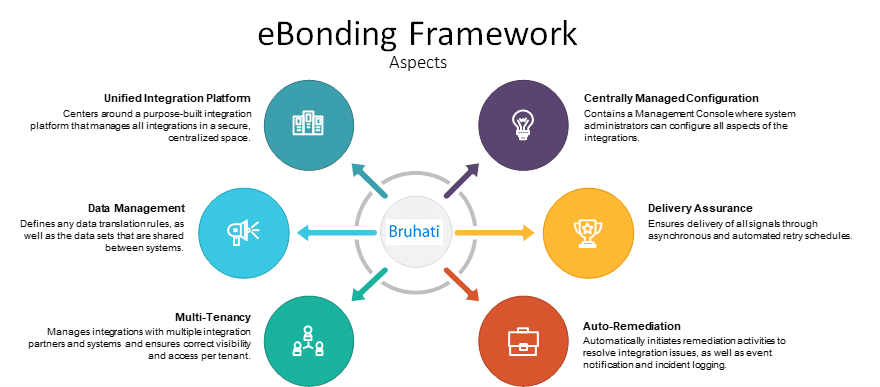eBonding Service Management Framework:
As an organisation matures, it inevitably becomes necessary to integrate its ITSM system with another, such as that of a vendor or a customer. This type of integration is known as eBonding, and allows for the seamless exchange of Incident, Change, Problem, and Service Request information.
It is important to follow sound eBonding principles when implementing such a solution, or risk falling prey to common pitfalls such as:
- Bonding failures
- Lost signals
- Records stuck in limbo
- Data configuration errors
- Overly complex integration patterns
- System timeouts
- Performance degradation
These issues can lead to lost man-hours, SLA failures, and lack of confidence in the business and its supporting systems. Implementing an eBonding solution built on a sound Framework will prevent these problems.
A great eBonding Framework will first establish the way in which one system communicates with another.

For more details on ADAF and ADDF, attend the webinar on Agile Architecture for Digital Transformation (clicking on the banner below) and you’ll be able to watch a Demo implementation of these frameworks.
Such a Framework will outline the integration methods, security, signals and data used by the integrated systems, as well as its resiliency measures. This Framework can then be shared with integration partners, who will then easily know how to integrate with your solution, and comply with the Framework. Such a Framework, and by extension the eBonding solution itself, can then easily be extended to support growth.
- Methods: Several methods can be used to integrate, such as REST, SOAP, API or ODBC. This depends largely on architectural considerations. While it is possible to use a combination, a good Framework will use only one, unless there is good reason to deviate.
- Security: Depending on the integration method used, it is important to consider the security of the connection and the data sent between systems. Make use of security features such as TLS, Security Certificates, and Encryption-At-Rest.
- Signals: Signals are both the definition of a message that can be sent between systems, and an instance of such a signal. The Framework should define these signals and their contents and manage the routing of them.
- Shared Data: Signals will contain the data shared with integration partners. Great care should be taken to ensure only the necessary data is shared and is transformed in such a way that it is easily digestible by the destination system, to reduce errors.
- Platform Resilience: Resilience is key for the success of an integration.
- Integration Partners: This refers to any system integrated with ITSM system. It could be a Service Desk owned and operated by a client or a vendor, or even a third-party company contracted to assist with support. It can also refer to other systems owned by the same company, such as an orchestration tool, ESB, CRM system, or Monitoring system.
Once the Framework is established, and the platform delivered, any new client can be added into the platform with minimal configuration.
Correct implementation of the Framework will result in an eBonding Platform that universally caters for the integration needs of your organisation. It will manage the routing of signals, error and recovery management, delivery resilience, and data transformation and provide a centralised management console for the capability giving an overview of the system health.
Such a system will be easily and quickly extensible to allow business growth and a greatly reduced time-to-market for new integrations. This leads to significant savings in capex and time. This Platform will make it easier for service desk staff to perform their duties, leading to reduced time-to-resolve and improved up-time for systems.
By working with an experienced Integration Design and Delivery team, it becomes possible to implement a complete and mature solution from the start of the integration journey and provide scope for future enhancement as it becomes necessary.
Speak to our partner Bruhati today to inquire how we can assist you with your eBonding requirements.



